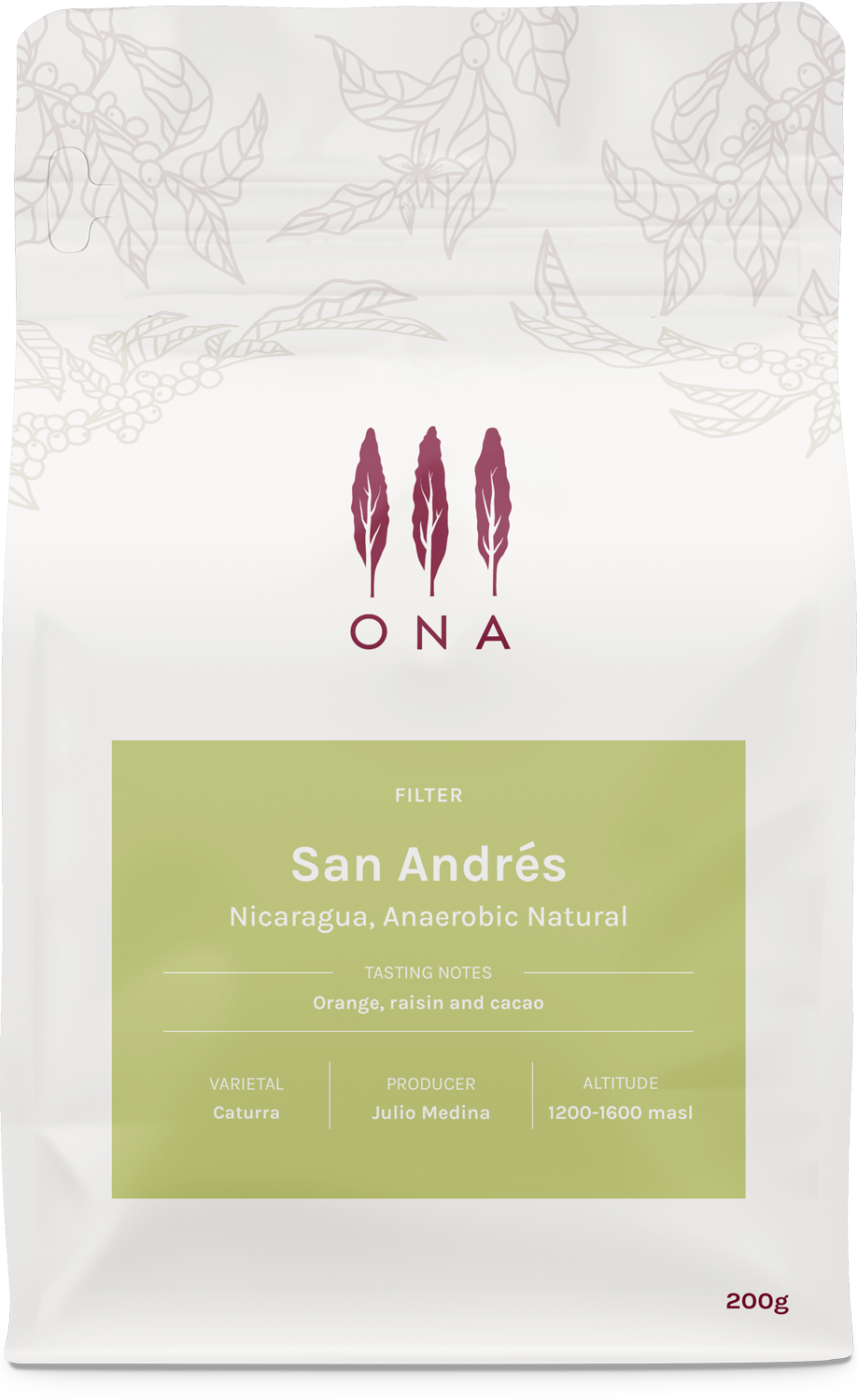

San Andrés, Nicaragua, Anaerobic Natural
- Regular price
- $20.00
- Sale price
- $20.00
- Regular price
-
- Unit price
- per
Orange, raisin and cacao
COFFEE PROFILE
This refined filter showcases the best attributes of Nicaraguan coffee, offering a beautiful balance of flavour. Sweet raisin notes pair nicely with cacao and orange, making it perfect for those who enjoy a flavourful and naturally sweet cup.
| TASTES LIKE | Orange, raisin and cacao |
| ROAST | Filter |
Story
Finca San Andrés, nestled in the misty highlands of Dipilto, Nueva Segovia, is a family-run estate managed by Julio Medina. For generations, Julio's family has cultivated coffee on these slopes, benefiting from the region's fertile clay soils and cool microclimates, which are ideal for high-quality coffee production. Working closely with Cafetos de Segovia, an exporter founded by Ana and Martha Albir Sotomayor, Julio receives support in agronomic training and post-harvest innovation. His focus on refining fermentation practices has led to the creation of an Anaerobic Natural microlot, showcasing the distinctive sweetness and structure of the Caturra variety. This meticulous approach has positioned Finca San Andrés as a key player in producing exceptional coffees that capture the essence of Nueva Segovia's rich coffee heritage.
| PRODUCER | Julio Medina |
| REGION | Dipilto, Nueva Segovia |
| VARIETAL | Caturra |
| PROCESS | Anaerobic Natural |
| ALTITUDE | 1200-1600 masl |

Origin
Dipilto, Nueva Segovia, Nicaragua
Nueva Segovia, situated in Nicaragua's far north along the Honduran border, is celebrated as the birthplace of the country's most esteemed coffees. Coffee cultivation in this region commenced in the mid to late 19th century, with smallholder families introducing heirloom Typica and Bourbon seeds from central Nicaragua and Honduras. The area's mountainous terrain, characterised by the Cordillera Dipilto-Jalapa range, offers ideal conditions for coffee with elevations between 1,100 and 1,800 metres, rich volcanic soils, and mist-covered forests. These factors established Nueva Segovia as a consistent producer of high-grown Arabica.
By the early 20th century, coffee became the economic backbone of the region, with small-scale, family-run farms dominating the landscape. Despite disruptions during the 1980s civil conflict, coffee farming rebounded in the 1990s with a focus on quality and sustainability. The global specialty coffee movement in the early 2000s further elevated Nueva Segovia's profile, with its coffees excelling in competitions like the Cup of Excellence. Today, Nueva Segovia is synonymous with high-elevation microclimates and experimental processing, producing some of Central America's most expressive coffees.
BREW GUIDE
How to get the best tasting cup
NOTE THESE ARE A STARTING POINT AND INDICATE A RANGE TO WORK WITHIN
| Age Best Used | 7-20 days after roast |
| Brew Parameters | Dose 20g in a V60 and add 300g of water in 5 pours of 60g at 90 degrees C. Start with a 60g bloom for 35 seconds then allow water to drain through each subsequent time before adding more water, aim to finish at 2:30 |
| Best Freeze Date | 7-12 days after roast |






